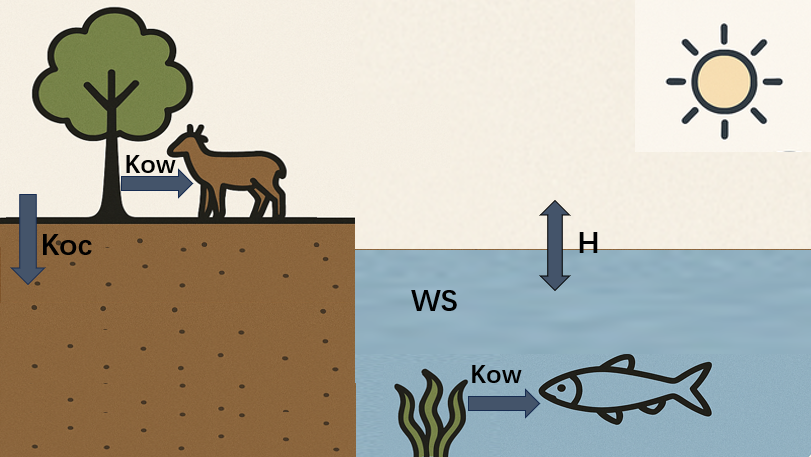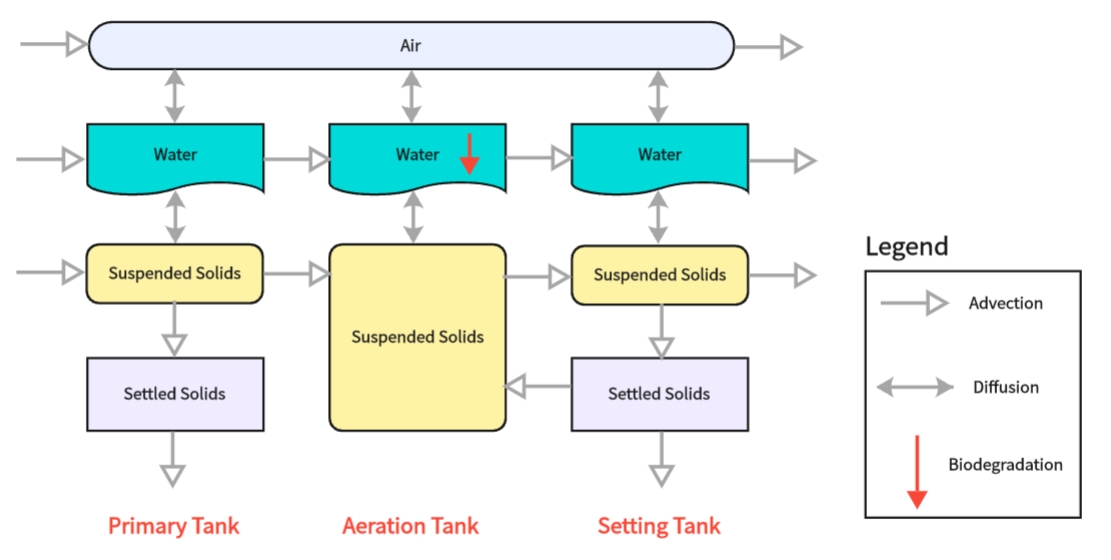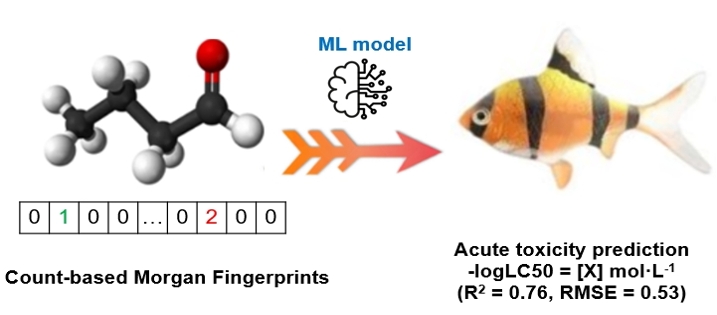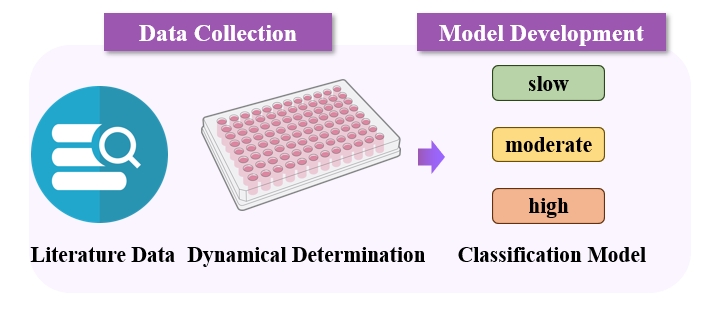
Physical Properties
Predict values for water solubility (WS), soil adsorption coefficient (Koc), octanol-water partition coefficient (Kow), and Henry's law constant (H) from SMILES. These indicators help determine how chemicals partition into environmental media.

Removability in Sewage Plants
Using a nine-box model based on SimpleTreat, we predict environmental fate after wastewater treatment. The minimum standard for input is SMILES, and providing biodegradability parameters can achieve more accurate predictions.

Acute Fish Toxicity
The 96-hour acute fish toxicity test is widely used as a benchmark for assessing environmental toxicity and ecological risk. LC50 values (mol/L, measured in -log units), representing the concentration at which 50% of the test organisms succumb within a 96-hour period, was used to describe the biological toxicity of chemicals.

Chlorine Reaction Rate Constant
The platform predicts the second-order reaction rate constants between organic compounds and chlorine (Cl). Results are categorized into fast, moderate, or slow, which helps assess the reactivity of chemicals in chlorinated environments.